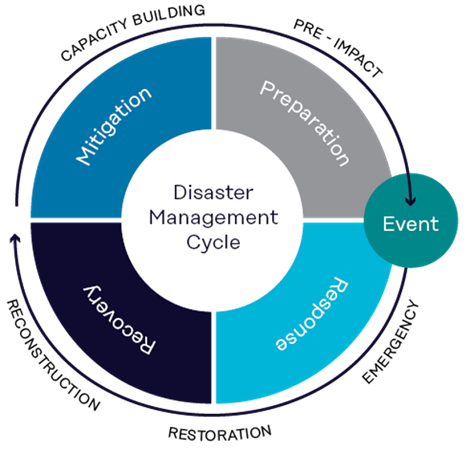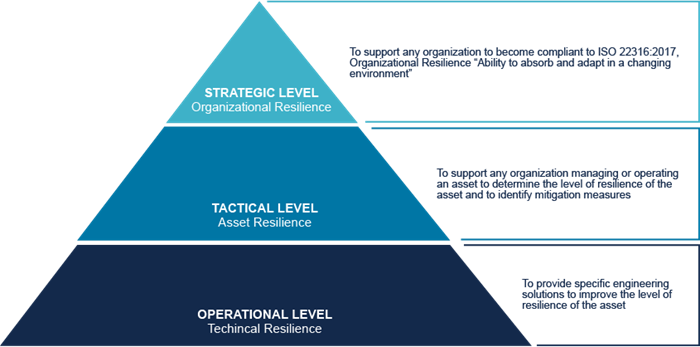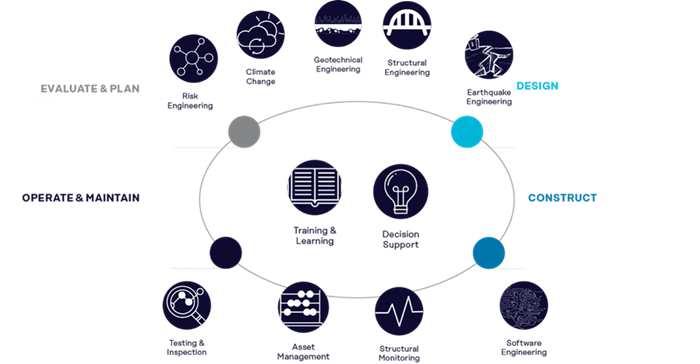Case study
Risk Assessment and Resilience Analysis of Critical Infrastructures for AFAD
A better localization and quantification of natural risks on the Turkish territory
 In the last decade, resilience has emerged as a concept for better understanding the performance of systems, especially their behavior during and after the occurrence of disturbances, e.g. unexpected natural hazards or technical failures. From an operational point of view, a resilient approach can be defined as the ability of a system to withstand an unexpected harmful change or a disruptive event by reducing the initial negative impacts, by adapting itself to them and by recovering from them in a timely and cost-effective way.
In the last decade, resilience has emerged as a concept for better understanding the performance of systems, especially their behavior during and after the occurrence of disturbances, e.g. unexpected natural hazards or technical failures. From an operational point of view, a resilient approach can be defined as the ability of a system to withstand an unexpected harmful change or a disruptive event by reducing the initial negative impacts, by adapting itself to them and by recovering from them in a timely and cost-effective way.
In order to tackle emerging technological, environmental, geopolitical, economic risks, RINA is able to help Clients in preventing, promptly detecting, timely responding to and cost-effectively recovering from disruptions, such as those caused by man-made events, global changes and natural disasters by increasing the resilience of their strategic and critical assets, within a systemic approach across various levels (from strategic to operational) and phases of the asset life-cycle (from planning, to design, up to operation and maintenance).
Spanning from the design of technological solutions to the development of policy and user’s recommendations, moving through hazards identification, risk and vulnerability assessment, up to the definition of assets protection strategies, we embrace our engineering capabilities to support private companies, public bodies and governmental institutions ensuring operational efficiency and business as well as service continuity.
 The service is delivered via the design, implementation and deployment of Resilience Plans (RPs) whose key features are the following.
The service is delivered via the design, implementation and deployment of Resilience Plans (RPs) whose key features are the following.
Therefore, the Resilience Plans (RPs) can assist the client in:
The main benefits the Client can gain are:
 Thanks to a multidisciplinary team and cross-sectorial approach, building on solid, established and widely recognised foundations and expertise RINA can support the Clients in defining, developing, applying and making operational resilient principles, no matter of the type of risk they are experiencing and of the sector of application. As such RINA provides in unique interface a complete technical advisor service on Resilience.
Thanks to a multidisciplinary team and cross-sectorial approach, building on solid, established and widely recognised foundations and expertise RINA can support the Clients in defining, developing, applying and making operational resilient principles, no matter of the type of risk they are experiencing and of the sector of application. As such RINA provides in unique interface a complete technical advisor service on Resilience.
In the area of Resilience Engineering, two main application areas have been identified as strategic for us, due to market evidence and company expertise: Critical Infrastructure Resilience (e.g. Energy, Transport, Water, Health, Finance, Information and Communication Critical Infrastructure) and Disaster Resilience (e.g. man-made events such as sabotage, intentional and unintentional attacks, etc. and natural events such as earthquakes, floods, landslides, wildfires, heavy precipitation, windstorms, etc.).